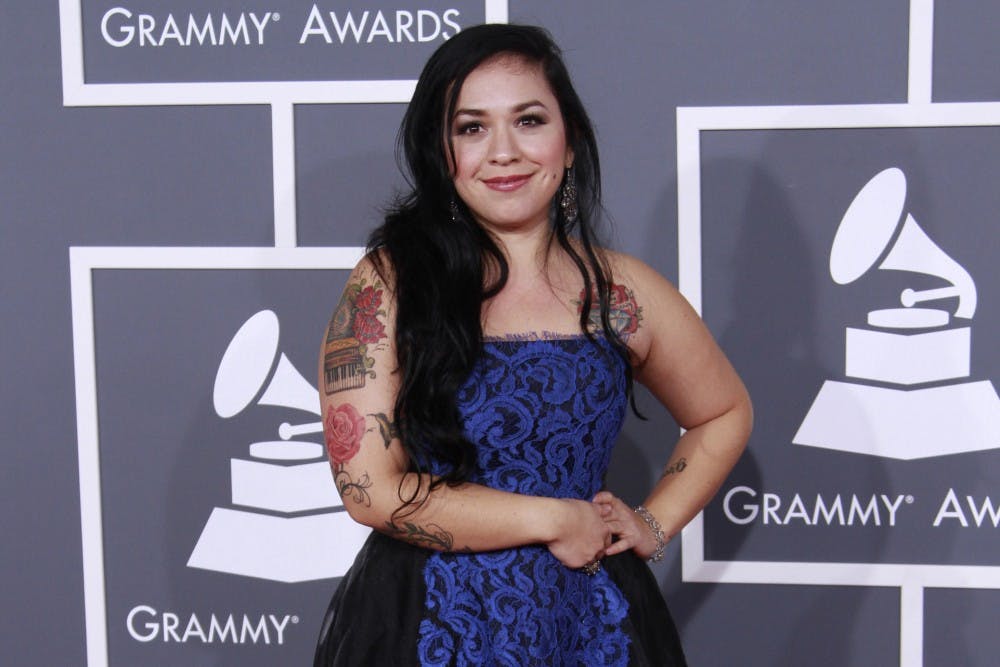Say the name "Selena" around any group of Latinxs, and they will likely react quicker than if you had called their own names. Her influence transcends racial boundaries, but for Latinxs in particular, she is an eternal musical icon and a profound inspiration.
Selena was a woman who tore through the curtains of sexism and racism with an unbridled passion for her craft, her heritage and though she is long gone, there are diverse Latinxs in the music industry today who are using their platforms to send positive messages to and about the young Latinx community.
Ricardo Palomera, a secondary education senior, said the music industry needs more Latinxs who are not afraid to openly embrace their identities. According to Palomera, one artist has accomplished this — Rage Against The Machine frontman Zack de la Rocha.
"People like (de la Rocha) are not only able to express their identity through different avenues, but they also use that identity and that message and turn it into an actual action," Palomera said.
De La Rocha and Rage Against The Machine are widely known for their politically-charged lyrics and social activism.
"He inspires you to go do something that’s bigger than you think," Palomera added. "Those are the type of artists we need —the ones who have an identity and are confident in sharing it and use that identity to make something happen."
One of Palomera's personal icons is Uruguayan-born singer Martin Sorrondeguy of hardcore bands Los Crudos and Limp Wrist. Sorrondeguy has used punk music as a way of sharing empowering messages to young Latinxs since Los Crudos' conception in 1991, and later founded queer punk band Limp Wrist.
"He's really relevant because he's also queer," Palomera said. "And I think that’s really cool, because as a man, that’s not the typical stereotype of how Latino men should be. He’s down to challenge a lot of things that go down in the status quo as a man and as a person of color."
Musicians like Sorrondeguy make a living off of being unapologetically themselves, a cliche that is painfully overused but still rings true in a world where people of color are represented ineffectively or not at all.
In her research on media representations of Latinxs, school of transborder studies associate professor Dr. Eileen Diaz McConnell found that "to date, studies suggest that media coverage of Latinxs have not improved over the years."
Guillermo Reyes, a professor in the ASU school of film, dance and theater, said inspiring young people to be themselves and follow their dreams is still the most important message artists should be sending.
"The biggest message is authenticity and being yourself," Reyes said. "But that may be naive in Hollywood, where people are being told to change their names and not be too ethnic."
Palomera agreed and added that the type of representation Latinxs need is people who are not afraid to be themselves, especially considering the ongoing struggle with identity that most Latinxs experience.
"I think every person of color struggles with their identity, because they don’t know if they fit enough. You start comparing yourself to other people and how they do their thing," he said. "I think it’s crucial for some kid at that age to have someone to look up to who can resonate with them. Because otherwise you're just gonna go along with what everyone else is doing."
Beyond a struggle with identity is a desire many young Latinxs have to see and hear someone who looks and sounds like them in a sea of non-Latinx artists they hear on mainstream American radio. Palomera said Mexican songstress Carla Morrison is an excellent example.
"When you grow up in the U.S., you hear a lot about the Taylor Swifts and the Sara Bareilles types," he said. "When you’re brown — granted, I’m a dude, so maybe I’m wrong — but if you’re a brown girl and you’re not into paisa or banda music at some point, you want a 'Mexican Taylor Swift!' Not saying Carla is, but she kinda reflects a lot of those feelings and emotions."
The struggles of young Latinxs cannot be placed into a box, because they are all immensely different. Music should be a solace in a world that makes us question who we are and what we can offer, and although people like Reyes, Palomera and Diaz McConnell agree that the road to fair representation is rocky and long, there is still hope.
"Now is a great moment for making change happen," Diaz McConnell said. "Given that Latinos are a growing population, it's a really excellent time for young Latinos in America to take advantage of every opportunity they are given to continue to build off of what their parents and grandparents already built."
Palomera said he feels that even in a country where the Latinx voice is still underrepresented, young people need look no further than their own neighborhood for comfort and inspiration.
"I think a lot of the people Latinos are starting to look up to now are just each other," he said. "People seeing each other going to movements and bettering their communities, and we're motivating each other."
Related Links:
Comparative Border Studies to screen documentaries by John Valadez
New program studies Arizona-Sonora border
Reach the reporter at celina.jimenez@asu.edu or follow @lina_lauren on Twitter.
Like The State Press on Facebook and follow @statepress on Twitter.




